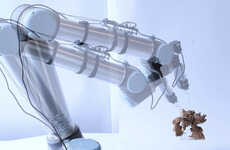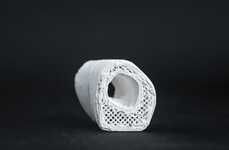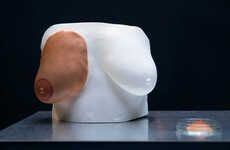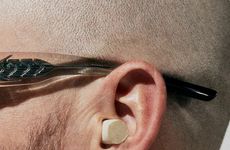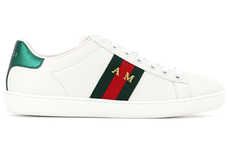
New Ears Have Been Grown in 3D-Printed Molds for Kids Born with Microtia
Alyson Wyers — February 1, 2018 — Tech
References: sciencedirect & theverge
In the recent past, 3D printed ear prosthetics have been used as new ears for children with microtia, where you are born with one underdeveloped ear. However, five children have now received new ears that were regenerated from their own cells using a 3D printed mold. The science behind this medical marvel was recently published in an academic research paper entitled 'In Vitro Regeneration of Patient-Specific Ear-Shaped Cartillage and Its First Clinical Application for Auricular Reconstruction.'
Using your own cells to regrow body parts is not an entirely new concept, but this example is much more complex given that it involves growing children. Research and long-term follow up also demonstrates the ears are less likely to be rejected by the body and become more detailed looking over time.
The image is sourced from EBioMedicine.
Using your own cells to regrow body parts is not an entirely new concept, but this example is much more complex given that it involves growing children. Research and long-term follow up also demonstrates the ears are less likely to be rejected by the body and become more detailed looking over time.
The image is sourced from EBioMedicine.
Trend Themes
1. In Vitro Regeneration - The trend of in vitro regeneration of patient-specific body parts using 3D printed molds, which has the potential to revolutionize body part reconstruction and reduce rejection rates.
2. Customized Prosthetics - The trend of 3D printing customized prosthetics, which has the potential to provide better fitting, more comfortable and natural-looking prosthetics.
3. Regenerative Medicine - The trend of regenerative medicine, which has the potential to treat a wide range of diseases and injuries by using the body's own cells and tissues to regenerate damaged or lost tissue.
Industry Implications
1. Healthcare - The healthcare industry can leverage in vitro regeneration for reconstructive surgery, prosthetics development and regenerative medicine.
2. Biotechnology - The biotechnology industry can leverage 3D printing and regenerative medicine to develop patient-specific regenerative products and tools.
3. Materials Science - The materials science industry can leverage 3D printing and biodegradable materials development to create 3D printed molds and implants that dissolve as patient's tissues regenerate.
3.5
Score
Popularity
Activity
Freshness





